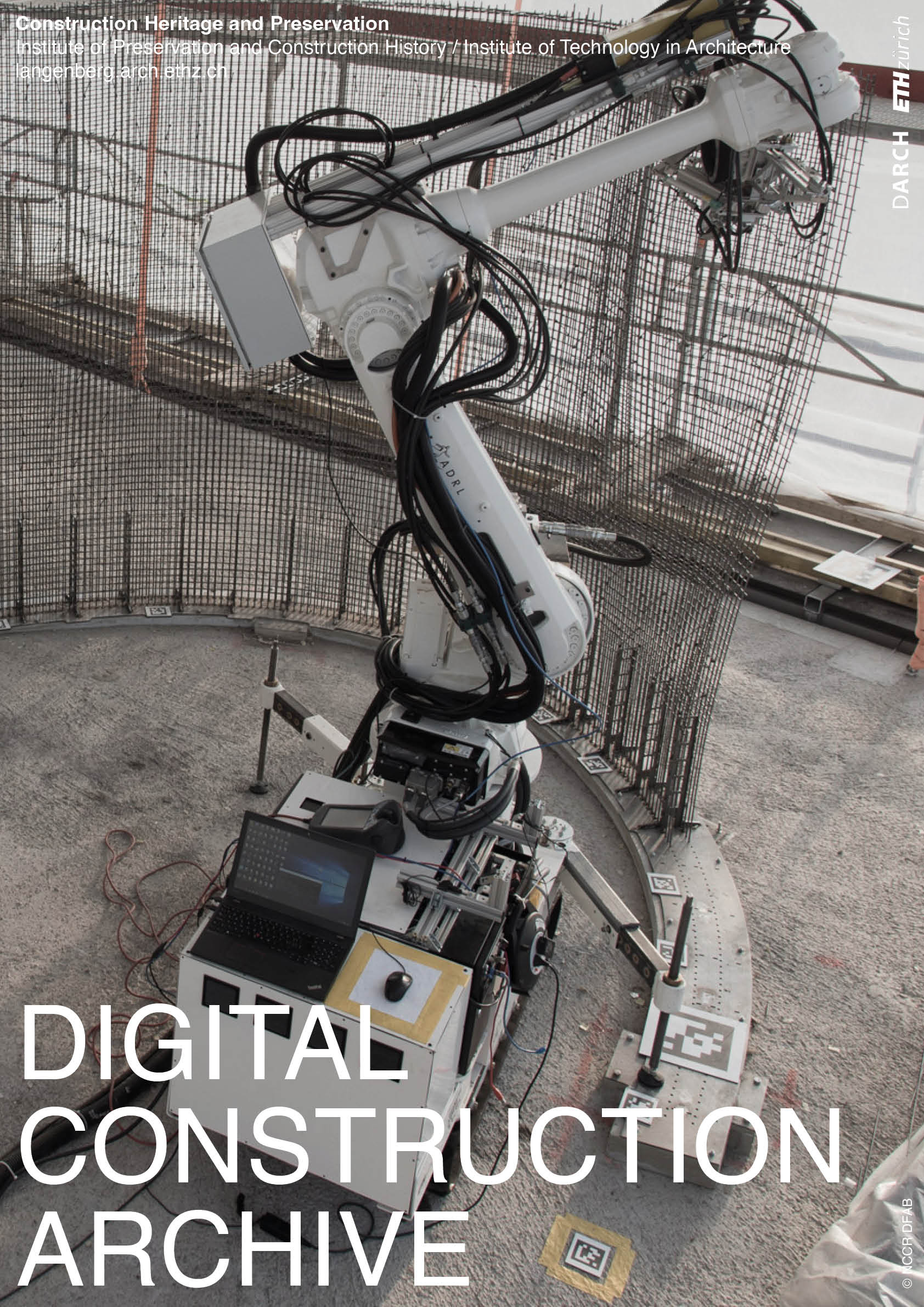
funded by the Swiss National Science Foundation (SNSF)
Project Proposal and Director: Prof. Dr. Silke Langenberg, Project Proposal: Dr. Tobias Büchi
Co-Director and Contact: Dr. Adrian Pöllinger
The radical turn from industrial to digital design and production has led to a paradigm shift in architecture, and it impacts the possibilities to preserve the resulting objects as much as its construction and design. Knowledge about building materials, construction techniques and production processes are currently being transferred into the digital realm. But how are buildings to be maintained or upgraded if digital data becomes lost, if no or only rudimentary information concerning material, construction and building process is available, or if this information can hardly any longer be gathered using the methods of traditional building research?
The SNF-project develops strategies to ensure the long-term preservation of architecture produced using digital means. To these ends the project focuses in a first phase on the analyses of the demonstrators realised by the National Centre of Competence in Research (NCCR) Digital Fabrication (DFAB). Considering current CO2 emission targets, the goal should ideally focus less on recycling and re-use and more on repairability. The ability to preserve and repair digitally planned and executed buildings requires the documentation of digital information concerning material, construction and above all fabrication.
The institutional intersection between preservation and digital fabrication at ETH Zurich forged at the chair is both unique worldwide and pivotal to the trajectory of the project. In cooperation with the Materialarchiv and other institutional and private partners, a prototype for a digital construction archive is being developed based on an open research database. This in turn is intended to be expanded to form the digital memory of digital Swiss construction heritage.
Repair of Discrete Assembly in Born-Digital Architecture
Laurence Crouzet
Langenberg, Silke,«Das Konzept ‘Ersatz’? Probleme bei der Reparatur industriell gefertigter Bauteile», in: Bayerl, Günter und Georg Stöger (Hg.). Reparieren – oder die Lebensdauer der Gebrauchsgüter, H. 3, Berlin: edition sigma, 2012 (= Cottbusser Studien zur Geschichte von Technik, Arbeit und Umwelt 79), pp. 255–272. https://doi.org/10.5771/0040-117X-2012-3-255
Langenberg, Silke, «Die digitale Herausforderung. Alterung, Reparaturfähigkeit und theoretische Reproduzierbarkeit digital fabrizierter Architektur», in: archithese , Weak materiality – Eine Schwäche für Materialität 3 (2013): pp. 84-85.
Langenberg, Silke, «Zur Erhaltung des nicht Haltbaren» , in: Das Digitale und die Denkmalpflege. Bestandserfassung – Denkmalvermittlung – Datenarchivierung – Rekonstruktion verlorener Objekte. Jahrestagung 2016, Arbeitskreise Theorie und Lehre der Denkmalpflege, hg. v. Franz, Birgit and Vinken, Gerhard, Heidelberg 2017, pp. 46–53, https://doi.org/10.11588/arthistoricum.263.348
Langenberg, Silke (Hg.), Reparatur. Anstiftung zum Denken und Machen, Ostfildern/London 2018
Langenberg, Silke, «Reparatur als didaktisches Konzept», in: Upcycling. Wieder- und Weiterverwendung als Gestaltungsprinzip in der Architektur, ed. by Stockhammer, Daniel, Zurich 2020, pp. 198–211.
Langenberg, Silke, ed. 2022. Upgrade: Making Things Better. Berlin. https://www.hatjecantz.de/products/60295-upgrade-making-things-better.
Langenberg, Silke. 2023. «Repair – Making Things Better». Edited by Florian Hertweck, Christian Hiller, Felix Hofmann, Markus Krieger, Marija Marić, Alex Nehmer, Anh-Linh Ngo, Milica Topalović, and Tümerdem Nazlı. ARCH+, The Great Repair. Praktiken der Reparatur / A Catalogue of Practices, 56 (253): 42–43.
Brenner, Matthias, und Silke Langenberg. 2023. «CLA». Edited by Florian Hertweck, Christian Hiller, Felix Hofmann, Markus Krieger, Marija Marić, Alex Nehmer, Anh-Linh Ngo, Milica Topalović, and Tümerdem Nazlı. ARCH+, The Great Repair. Praktiken der Reparatur / A Catalogue of Practices, 56 (253): 60–63.
Brenner, Matthias, Louis Vandenabeele, and Silke Langenberg. 2023. “The potential of reverse engineering and digital fabrication for the repair of high-tech architecture.” The International Archives of the Photogrammetry, Remote Sensing and Spatial Information Sciences XLVIII-M-2–2023 (June): 303–9. https://doi.org/10.5194/isprs-archives-XLVIII-M-2-2023-303-2023.
